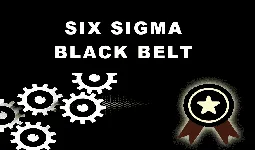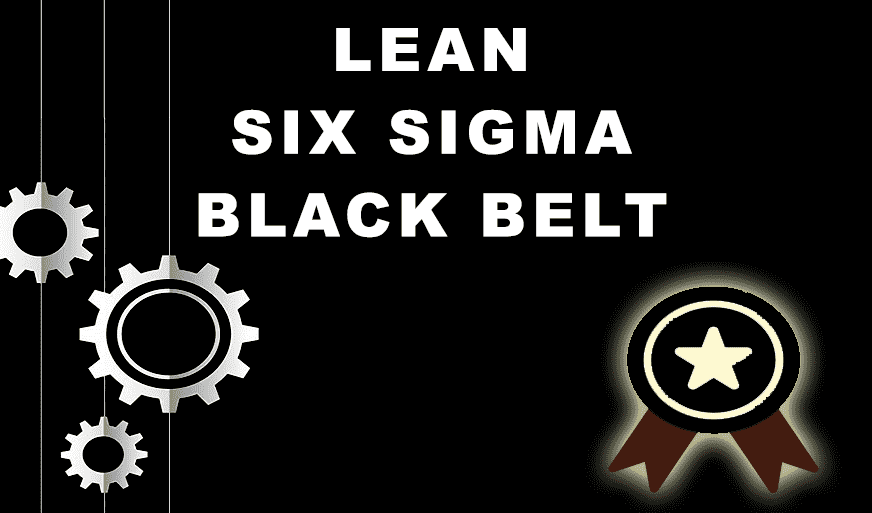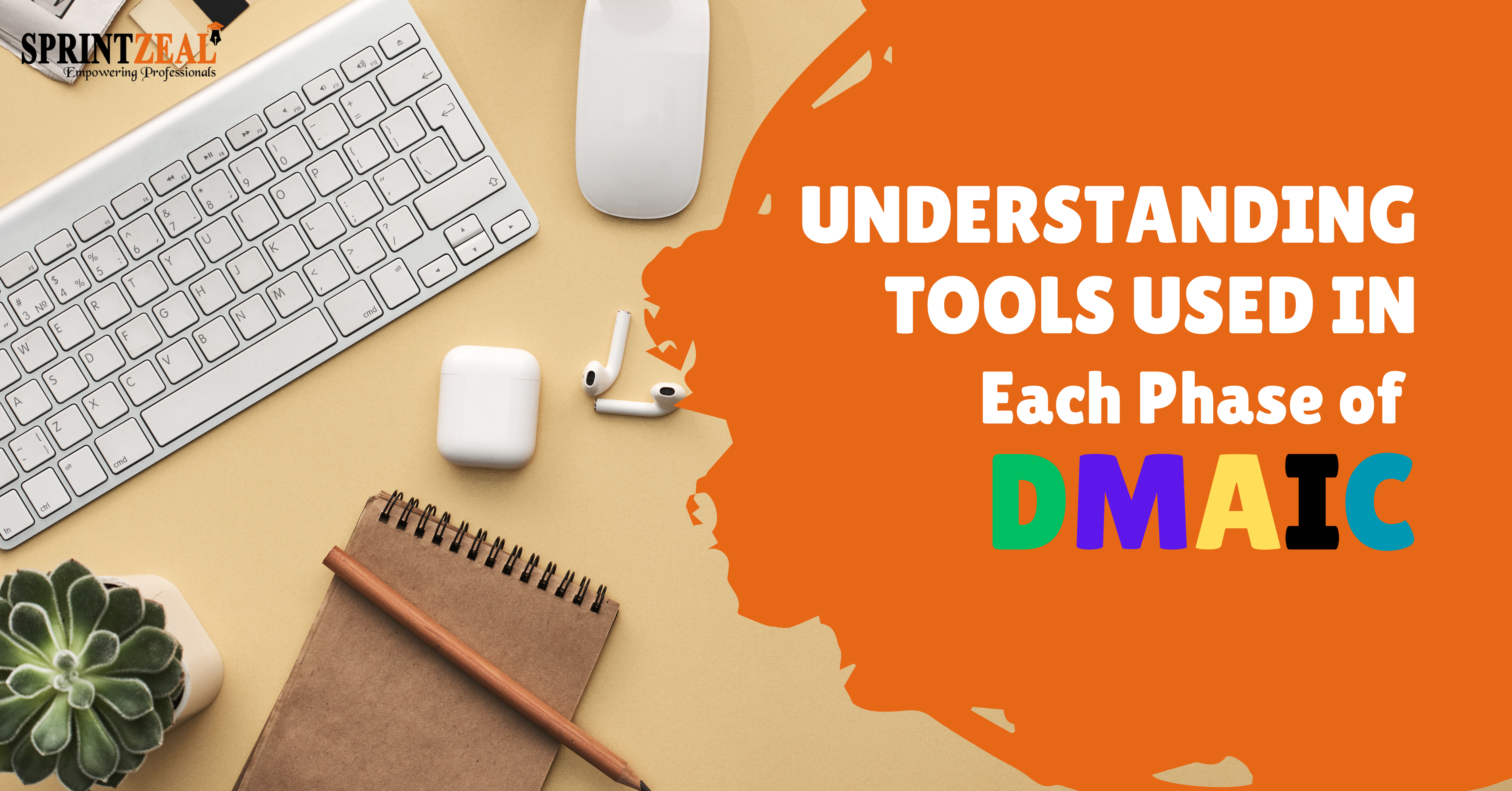Implementing 5S Methodology for Better Work Efficiency
-
 By Syed Irfan
By Syed Irfan - Published on Dec 4 2023

Table of Contents
Understanding the Basics of 5S Methodology

Sort (Seiri): Simplifying the Workspace
The 'Sort' or Seiri principle, which promotes organizing and streamlining the workspace, is the cornerstone of 5S. This first stage is critically assessing everything in the workspace, deciding what is essential, and getting rid of what isn't. The goal is to establish a purpose-driven, well-organized workspace where all equipment and supplies have their designated roles.
Set in Order (Seiton): Organized Accessibility
'Set in Order', or Seiton, is what happens after sorting. The goal of this stage is to organize the materials and tools into a systematic arrangement with specific locations. Logical item arrangement improves accessibility, and visual cues like labels help to streamline processes. Here, the focus is on streamlining tool searches and organizing the workspace to communicate order.
Shine (Seiso): Elevating Cleanliness for Efficiency
"Shine," or Seiso, is more than just a conventional definition of cleanliness. It entails setting up a workspace that exudes order and discipline in addition to being aesthetically pleasing. Establishing regular cleaning schedules helps to guarantee that the workspace, tools, and equipment are kept in good working order. Not only can a clean environment increase productivity, but it also makes a workplace much safer.
Standardize (Seiketsu): Establishing Consistency
Establishing uniformity in processes and procedures is the goal of "Standardize," or Seiketsu, which builds on the achievements of the previous three steps. The 5S principles are made sure to become ingrained in the company culture by frequent audits, training, and documentation of standardized practices. Application consistency ensures long-term effectiveness, security, and waste minimization.
Sustain (Shitsuke): Nurturing a Culture of Improvement
'Sustain', or Shitsuke, the last stage, turns 5S from a methodology into a philosophy. It entails creating an environment at work where constant improvement is not just welcomed but also deeply engrained. The maintenance of the 5S system depends critically on regular training, continuing assistance, and recognition of accomplishments. The productivity and culture of the company see long-lasting gains when all team members actively participate.
Understanding the basics of the 5S Methodology is the first step towards unlocking its transformative potential. In the upcoming sections, we'll delve deeper into how each 'S' contributes to specific facets of organizational excellence. 5S impacts productivity, safety, waste reduction, and the overall commitment of employees to a culture of continuous improvement.
Keys and Tips to Implement 5S Methodology
Today, most organizations or businesses start their lean improvement with the implementation of 5S. Now you must be wondering what 5S is. The 5S Methodology is a Japanese methodology that is widely used to reduce errors. It is considered the most effective method to avoid mistakes for better returns.
It is essential to know that the 5S methodology is the most effective way for companies or businesses to get familiar with the improvement cycle through the involvement of the workers to organize and enhance the conditions of the workplace. In this article, you will learn more about the 5S lean.
Many manufacturers from all around the world prefer the implementation of 5S. According to the source, many manufacturers have implemented the strategy of 5S at their workplace organizations to constantly improve or supplement the lean manufacturing process. The concept of 5S is to decrease waste while optimizing production through an orderly workplace.
This process prefers visual cues to attain more consistent operational returns. There are five pillars of workplace organization that include, to an extent, looking for ways to decrease potential time wasted and determining the process to use with returning items. Under this philosophy, parts and tools are presented in different ways that make them accessible and easy to use.
How to begin an implementation plan?
The most important thing that matters is implementing 5S lean six sigma, or 5S methodology. Therefore, it is highly recommended to proceed with the implementation process by following all essential rules and principles and the correct procedure. Here is the insightful information regarding the ways to improve performance with the help of 5S lean six sigma. Make sure to follow all the steps to get better results and increase your workplace organization's overall performance.

Step 1: Determination
The first step includes determining the nature of your business. In this stage, you will have to determine how well your business or organization is doing. This process is vital as it helps gather all essential information to lead to better growth and performance.
Make sure to consider specific questions before starting the actual implementation process of the 5S methodology. Instead, let's perform a test, and if you can answer all the questions with yes, you may find the use and benefits of 5S.
Do the people in your workplace organization have trouble locating files or documents? It doesn't matter if the file is physical or digital. But if you cannot answer this question with yes, you need to consider the implementation of the 5S methodology. It will help you overcome the challenges and ensure a straightforward process to keep your documents or files safe and in an organized form.
Do you think that the files, the drawer, and the cabinet are all labeled, or do they contain anything unmarked that is very difficult to determine?
Do you think you have enough space in the workplace to keep valuable things, or are you aware that useless items take up space there? In that case, the 5S system will help to free up space.
Does everyone know how to keep the workplace fully aware of their specific roles and responsibilities? If not, then you lack a 5S system in your organization.
Step 2: Broken Down
In this phase, five terms represent the five processes for the operation and excellence of the process, which include the following:
Sort:
This step is mainly used to separate the essential tools and materials from those that are no longer needed. This step includes removing everything that is not essential from the work area.
Store:
The second S in the 5S is for store. This step plays an essential role in implementing the 5S system in an organization. This step helps to sort and organize all the necessary tools, equipment, files (either digital or physical), accessible locations, data material, and uses. In addition, this helps to label all the storage with specific names accordingly to avoid hassle during working time.
Shine:
These steps set a new standard for cleanliness. This step ensures that all trash and dirt are removed from the workplace to keep the working environment neat and healthy.
Standardize:
This step includes encouraging the workforce to perform all the measures necessary to maintain the workplace organization perfectly. Standardize processes to establish a schedule and set expectations for adherence.
Sustain:
Sustain is working as the last S of the 5S system and creating 5S as part of the culture. This step includes building organizational commitment to make 5S a habit in an organization.
Step 3: The Action
Step three is all about the action plan for workforce development and organization growth. For this stage, you need to begin implementing the 5S system by offering full training to your organization or business staff so they understand the system and its benefits.
For these steps, you need to give time and effort to see better results in the end. You may need to follow up with a one-day session with the employees of your organization or with the team members to make sure that they are on the same page with regard to the 5S methodology.
During the first day's session, you will have to explain all the first three 5S requirements. After that, you can automatically move on to the other two 5S requirements.
- Make sure to take a picture of the current status of your workplace organization and then sort to separate all the essential things from what is no longer needed for use.
- Now it is essential to organize vital things like tools, information, data, files, and others in a place where they will be easy to find when needed. Then, you should be able to figure out anything in just a few seconds to avoid wasting time.
- After that, you need to understand the concept of cleanliness. Keeping the workplace and environment clean is essential to maintaining health and avoiding injuries or damage. Make sure to label them to store them in a well-organized manner.
- The following process includes preparing an action plan for things you cannot deal with. In addition, this process comprises selling useless items and donating them for recycling.
- Now compare the picture with the steps mentioned earlier to see the drastic changes in your workplace organization.
Step 4: Standardize
When you are at the first one-day session, you need to take the third picture and compare it to the other two. You will find that something is missing. The thing missing is the standardization. It is vital to maintain the standard of cleanliness even after a week or month. Make sure to follow all the steps to keep up with the standardization.
Step 5: Sustain
Two months later or more, make sure to check out how your 5S lean workplace looks and then schedule for another peer review. Again, it will help maintain continuity.
Quality tools and techniques of the 5S system
5S is the first tool needed in any workplace organization, starting the culture of continuous improvement. The implementation of 5S ensures that the first rules of waste elimination are defined in order to maintain efficiency.If we talk about its popularity, then the 5S system was first popularized by Taiichi Ohno, the owner of the Toyota Production System, and Shigeo Shingo.
The 5S methodology is the most effective and easy-to-use method for achieving better workplace organization. The best thing about this methodology is that it doesn't require technical analysis. We can quickly implement the 5 S system globally in almost all companies, from manufacturing plants to offices and small businesses to large organizations. It is very applicable.
5S is considered a perfect tool to determine the first improvement projects of an organization to remove waste. Though this system seems more like a housekeeping technique, it is an innovative management system. The concept of the 5S system helps people think lean, paving the way for the adoption of the 5S lean principles in the workplace.
It is necessary to have a better understanding of this field to increase the overall performance of an organization. Having better knowledge of the 5S methodology is also considered one of the foundations of the principles of 5S/6S, and it can be beneficial for every organization. It makes no difference what type of organization you work for. The implementation of 5S lean manufacturing is considered the ideal system.
Enroll in Lean six sigma green belt certification and get certified
Benefits of 5S Process Implementation
Now let's talk about the perks of the 5S lean manufacturing function to understand the concept better. Many people are still not well aware of the term and its benefits. Make sure to stick to this page to access all kinds of information related to the 5S process.

It will help you run your business most effectively. People widely accept this process to eliminate all types of errors. Here are the benefits that you can access by making use of the 5S methodology:
Enhance the level of productivity
It is no hidden fact that every organization or business strives for increased productivity. Productivity level matters the most, and almost every organization needs to increase productivity for better returns. Therefore, it is essential to understand the value of the increase in productivity.
Overall, increments in productivity lead to a better return on investment. As per global research by several consulting firms in the United States, the effective implementation of the 5S lean processes ensures better improvement.
If you are willing to remove unnecessary items, you need to implement the lean principles (5S). This process helps in the removal of unnecessary items. Also, it helps to maximize an efficient workplace, which is enough to assist in the development and improvement of productivity levels with extremely low wastage of time.
You can access beneficial results in a short time. Less time spent searching for unnecessary items also means more time spent working. Therefore, you can get more time to work for the better productivity of your organization and its growth.
Get certified with Lean Six Sigma black belt certification and become an expert.
Safety
One of the most appreciable advantages of the 5S methodology is that it helps access an improved safety version. Therefore, it is essential to implement the 5S method to access improved safety versions. We all know that safety is the most helpful thing required in an organization.
If you need improved safety, then you have the chance to make it through the implementation of the 5S methodology. It is essential to know that a clean workplace environment, especially in the manufacturing unit, can significantly reduce injuries sustained by the workers.
Most of the time, unattended chemical spills also increase the risk factors for damage to the workers, just as they increase the chances of slips and falls as well. Implementing it will help minimize any errors or injury risk factors.
The best thing about this process is that it helps increase employees' morale with the reduced incidence of injury and conveys concern for the safety of workers. In terms of safety, this implementation is a great help. We all know that workplace organizations should eliminate waste to highlight safety.
Reduction of waste
The primary objective of Methodology 5 is to implement it, as it will help in a fair reduction in lost and damaged items in the workplace. We all know that it is vital to keep the workplace clean and organized to increase the mood level of workers.
A clear and planned workplace with proper labeling ensures flexibility to the workers to replace the damaged items in the designated places. In addition, this process minimizes the total number of misplaced and lost tools and equipment.
Before going further, it is essential to know that the appropriate management of the equipment helps minimize the damage generally caused to several parts of the product during the production process. It aids in reducing time waste. You don't need to stop your work just for silly reasons.
Implementing the standard 5S system ensures a significant reduction in the required square footage for the operation's existence. This system also includes getting rid of useless items from the workplace organization to free up space that can be used further in the most effective way.
Commitment
It is no secret that achieving workers' commitment is one of the primary goals of implementing the 5S Methodology and manufacturing training. It is all possible because the workers are more responsible for using it on the ground. Therefore, the implementation of 5S mainly emphasizes workers' participation by streamlining their work and delivering input to change the productivity level dramatically.
You can get a commission for increased changes in production with the overall design of the workplace using this implementation. It also ensures that it carries out its maintenance task. The best thing about this implementation is that it helps to encourage the workers involved for the long-term sustainability of the workplace, which improves the commitment towards the workers—this improvement has to offer ancillary benefits of lower absenteeism.
The best goal of implementing the 5S system is to increase the morale of the workplace organization. You can quickly do it by making it routine to implement proper processes and discipline to avoid the system's backsliding. In addition, this system includes preventing a dark, disorganized workplace.
Overcoming Challenges in 5S Implementation
Taking the first step toward organizational excellence by implementing 5S is a revolutionary process. But, it has its share of difficulties, just like any major transformation endeavor. A seamless and effective integration of the 5S technique into the corporate culture depends on identifying and proactively overcoming these issues.
Resistance to Change
Opposition to change is a common roadblock in the 5S implementation process. Workers might be used to the current work procedures, therefore implementing a new approach could be seen with suspicion. Effectively communicating the advantages of 5S, responding to concerns, and incorporating staff members in decision-making are all necessary to overcome this obstacle. Resistance can be greatly reduced by instilling a sense of ownership and highlighting the benefits of 5S.
Insufficient Training and Awareness
Implementing 5S successfully requires a workforce that is not only aware of the methodology but also trained to apply its principles. Insufficient training can impede the effective execution of the 5S steps. Organizations need to invest in comprehensive training programs that ensure employees understand the methodology, its benefits, and how to integrate it into their daily tasks. Regular awareness campaigns can further reinforce the importance of 5S.
Lack of Leadership Commitment
For any organizational change to be successful, leadership commitment is paramount. If leaders do not actively support and champion the 5S initiative, it is likely to lose momentum. Leaders must communicate the strategic importance of 5S, allocate resources for its implementation, and actively participate in the process. Their commitment sets the tone for the entire organization and reinforces the significance of 5S as a long-term cultural shift.
Inadequate Resources Allocation
Insufficient allocation of resources, both in terms of time and materials, can hinder the progress of 5S implementation. Organizations need to assess the requirements of each 5S step and allocate resources accordingly. This includes providing the necessary tools, equipment, and time for employees to engage in sorting, organizing, cleaning, standardizing, and sustaining the 5S principles.
Lack of Continuous Improvement Culture
Building a culture of continuous improvement is the core of 5S. It could be difficult for some organizations to sustain this culture after the initial stages of deployment. To surmount this obstacle, it is imperative to incorporate 5S into performance management systems, conduct routine process reviews and updates, and acknowledge and incentivize ongoing improvement endeavors. The longevity of the benefits of 5S is ensured by a culture that promotes continual improvement.
By addressing these challenges head-on, organizations can pave the way for a successful 5S implementation. In the subsequent sections, we will delve into specific strategies and best practices to overcome these challenges, ensuring that the journey towards organizational efficiency and excellence remains on a steady and rewarding course.
Maintaining Long-Term Success with 5S
5S is about sustaining and continuously improving the gains over the long term. As organizations experience the positive transformation brought about by 5S, maintaining that success becomes a strategic imperative. Let's explore key considerations for ensuring the enduring impact of 5S in your workplace.
Institutionalizing 5S as a Core Value
Long-term success for 5S requires it to become engrained as a fundamental company principle. This means incorporating the 5S concepts into the purpose, vision, and values of the business. Employees are more likely to accept and uphold 5S concepts regularly when they understand that they are an essential part of the organization's operations and not merely a passing project.
Continuous Training and Skill Development
Regular training sessions, workshops, and refresher courses should be conducted to keep everyone updated on best practices, new tools, and emerging trends in workplace organization. Investing in the skill development of employees ensures that they remain proactive contributors to the 5S culture.
Regular 5S Audits and Assessments
Conducting regular 5S audits provides insights into compliance levels, adherence to standards, and the overall impact on workplace efficiency. Establishing a structured audit schedule and involving employees in the process fosters a sense of responsibility and accountability for maintaining the established 5S standards.
Integration with Performance Management Systems
When success in 5S becomes a measurable component of performance evaluations, employees are motivated to consistently apply its principles. This integration aligns individual contributions with the broader organizational objective of sustaining a lean and efficient workplace.
The journey toward long-term success with 5S is a collective effort that involves every member of the organization.
Conclusion
It is crucial to understand 5S better to access better returns. Generally, 5S is a valued number in the lean toolkit. Mainly, it stands for five individual syllables. Most organizations prefer a successful implementation of the 5S methodology to eliminate unrequired wastage of resources, clean the space, and develop the process.
The best thing about this process is that it also helps in reorganization and better discipline. Learning and implementing this methodology is all you need to help make it more efficient and relying on Six Sigma is not to be considered.
The concept of implementing the 5S system helps to drive companies to enhance effort while keeping the aim to eliminate waste and any errors from the workplace organization. So overall, we can say that it helps improve a company's bottom line. We can quickly do it by enhancing the product and service, which helps to lower the cost.
Sprintzeal offers world-class training for lean six sigma courses all over the globe. If you’re aspiring to get certified and advance your career with six sigma certifications, enroll in sprintzeal’s six sigma course. To get full details about various levels of six sigma certifications, chat with course expert.
Free Resource – Six Sigma Certification Guide 2022
Subscribe to our Newsletters
Popular Programs
Trending Posts
Tips for Continuous Integration Testing: Streamlining QA
Last updated on Feb 18 2025
Overcoming Common Challenges in ISO 9001 Certification: Tips and Best Practices
Last updated on Sep 9 2024
Six Sigma tools for DMAIC Phases
Last updated on Nov 8 2024
Certified Scrum Product Owner: Job Roles And Responsibilities
Last updated on Feb 17 2025
A Deep Dive into the Power of Lean Continuous Improvement Process
Last updated on Nov 14 2023
Quality Assurance in Six Sigma Explained
Last updated on Feb 6 2023
Categories
- Agile Management 54
- AI and Machine Learning 42
- Big Data 53
- Business Management 51
- Cloud Computing 44
- Digital Marketing 56
- Information Security 8
- IT Hardware and Networking 17
- IT Security 103
- IT Service Management 29
- Leadership and Management 1
- Microsoft Program 2
- Other 43
- Programming Language 31
- Project Management 162
- Quality Management 75
- Risk Management 8
- Workplace Skill Building 2
Trending Now
Top Career benefits of Lean Six Sigma Green Belt
ArticleLean methodology, Six Sigma methodology and Lean Six Sigma Explained
ArticleSix Sigma Black Belt Certification – Value and Career Benefits in 2024
ArticlePareto Chart in Six Sigma - Explained
ArticleQuality Management Interview Questions 2024
ArticleSix Sigma Certification Guide - A Professional's Guide
ArticleSix Sigma Yellow Belt Certification - Six Sigma for Beginners
ArticleQuality Control Explained – Six Sigma
ArticleTotal Quality Management - A Complete Guide for Beginners
ArticleQuality Assurance in Six Sigma Explained
ArticleQuality Assurance vs Quality Control
ArticleSix Sigma Certification – Everything you Need to Know About Getting Certified
ArticleLean Six Sigma on Resume for Rewarding Career Benefits
ArticleQuality Manager Interview Questions and Answers for 2025
ebookService Delivery Manager Interview Questions and Answers (With Examples)
ArticleSix Sigma Interview Questions and Answers 2024
ArticleHow to become a Quality Analyst
ArticleA Supply Chain Management Guide to Mastering Logistics End to End
ArticleSenior Quality Manager Interview Questions and Answers 2024
ArticleTop 30 Quality Analyst Interview Questions and Answers 2025
ArticleFinancial Analyst Interview Questions and Answers 2024
ArticleRisk Manager Interview Questions and Answers 2024
ArticleCompliance Manager Interview Questions and Answers 2024
ArticleOperation Manager Interview Questions and Answers
Article5 Lean Continuous Improvement Principles to Supercharge Your Operations
ArticleHow to Become a Quality Manager - Career, Job Scope and Certifications
ArticleEssential Components of a Quality Management System
ArticleSix Sigma Certifications - Reasons Why you Should Get Them
ArticleTop Qualities of a Good Manager and a Leader
ArticleLearn about Statistical Process Control (SPC) and its top applications
ArticleCost of Poor Quality - A Detailed Guide
ArticleWhat Is Lean Management?
ArticleBest Six Sigma Books in 2024
ArticleLeadership vs Management - The Ultimate Guide
ArticleQuality Assurance Plan - Six Steps To Quality Assurance Plan
ArticleOperational Planning Creation, Key Elements and its Benefits
ArticleA Complete Guide to Product Life Cycle Stages 2025
ArticleSix Sigma tools for DMAIC Phases
ArticleWhat Is Lean Manufacturing?- An Overview
ArticleThe Lean Continuous Improvement Model: A Comprehensive Guide
ArticleDMAIC vs. DMADV: Key Differences and Choosing the Right Six Sigma Methodology
ArticleA Deep Dive into the Power of Lean Continuous Improvement Process
ArticleLean Continuous Improvement Methods for Business Excellence
ArticleIntroduction to Lean Manufacturing- Definitions, Framework, and More
ArticleUnderstanding the Key Principles of Lean Manufacturing
ArticleSecret to Unlock Organizational Excellence: Stages of Continuous Improvement
ArticleLean Continuous Improvement: A Detailed Guide to Mastering Organizational Quality
ArticleLean Waste Management: The Ultimate Guide 2023
ArticleA Deep Dive into Lean Continuous Improvement Tools
Article8 Wastes of Lean - Strategies for Identification and Elimination
ArticleThe Ultimate Guide to Lean Manufacturing
ArticleUnderstanding Lean Manufacturing's Pros and Cons
ArticleLean Waste Reduction Strategies: Boost Efficiency and Cut Costs
ArticleTop 10 Lean Manufacturing Tools for Optimal Productivity
ArticleBeyond the Basics: Benefits of Lean Continuous Improvement
ArticleWhat are Quality Standards? | A Guide to ISO Standards
Article7 Important Types of Quality Management System
ArticleA Comprehensive Guide to Quality Management Systems
ArticleISO 9001 Standard: Benefits and Certification
ArticleBenefits of QMS Certification for Your Business
ArticleStep-by-Step Implementation Guide to ISO 9001
ArticleThe Ultimate Guide to ISO 9001: Boosting Quality and Certification Success
ArticleQuality Management System – QSM Approaches and Methodologies
ArticleHow to Effectively Implement a Robust Quality Management System?
ArticleExplaining QMS Documentation Structure: Benefits and Best Practices
ArticleWho Needs ISO 9001 Certification and Why?
ArticleKey Elements of ISO 9001:2015 Quality Management System
ArticleOvercoming Common Challenges in ISO 9001 Certification: Tips and Best Practices
ArticleBest Quality Management Tools
ArticleTotal Quality Management (TQM) vs. Six Sigma
ArticleQuality Manager Salary: What Freshers & Experts Earn in 2025
ArticleCertified Scrum Product Owner: Job Roles And Responsibilities
ArticleTips for Continuous Integration Testing: Streamlining QA
Article10 Quality Management Strategies Adopted by Top Managers
Article

















